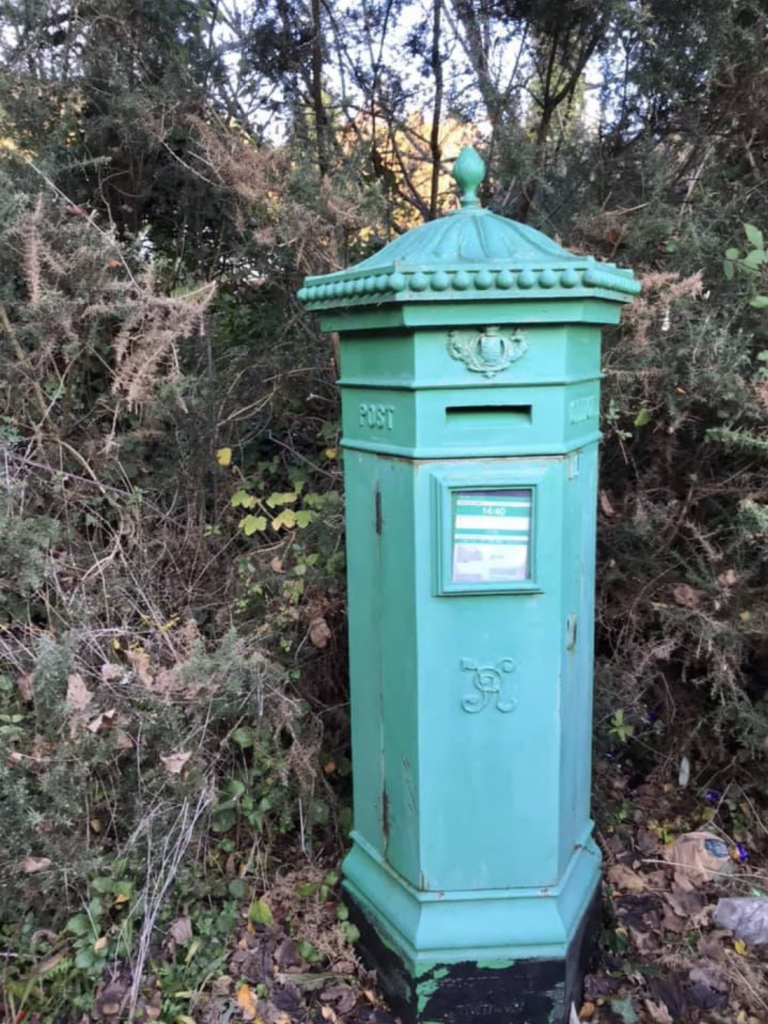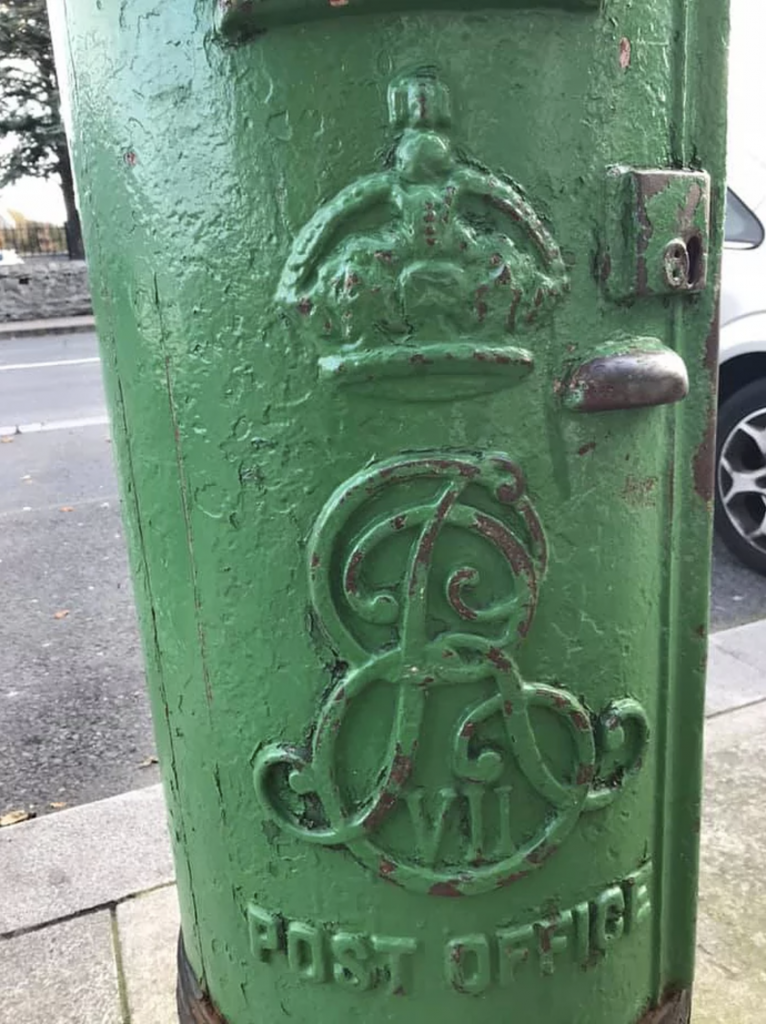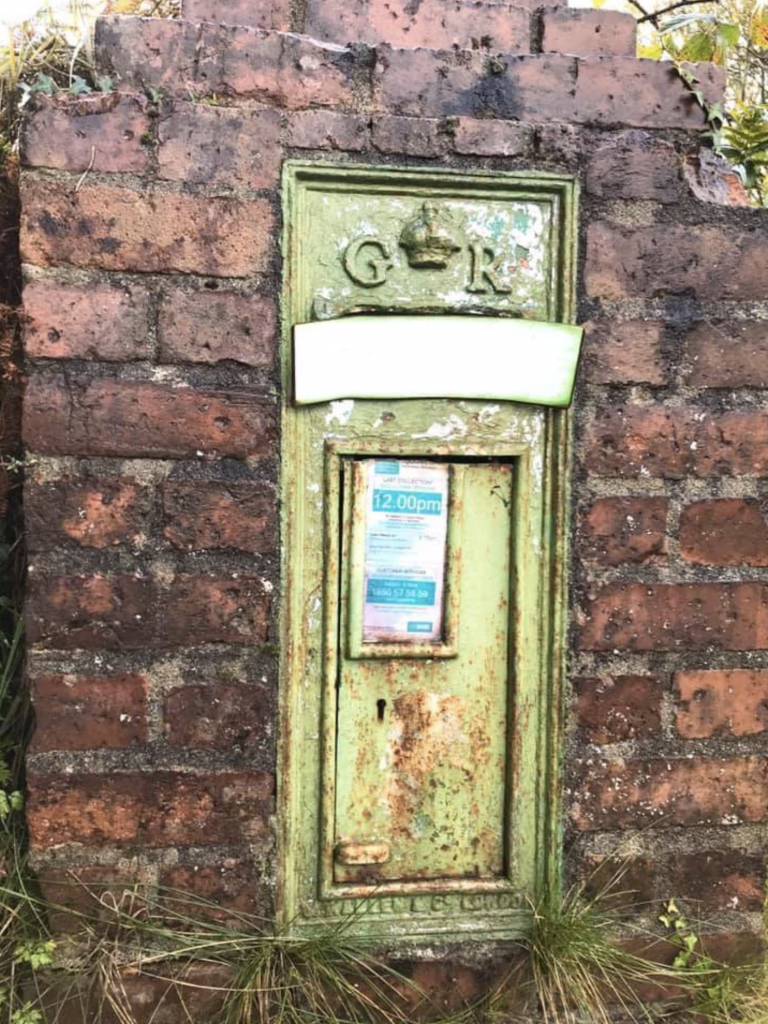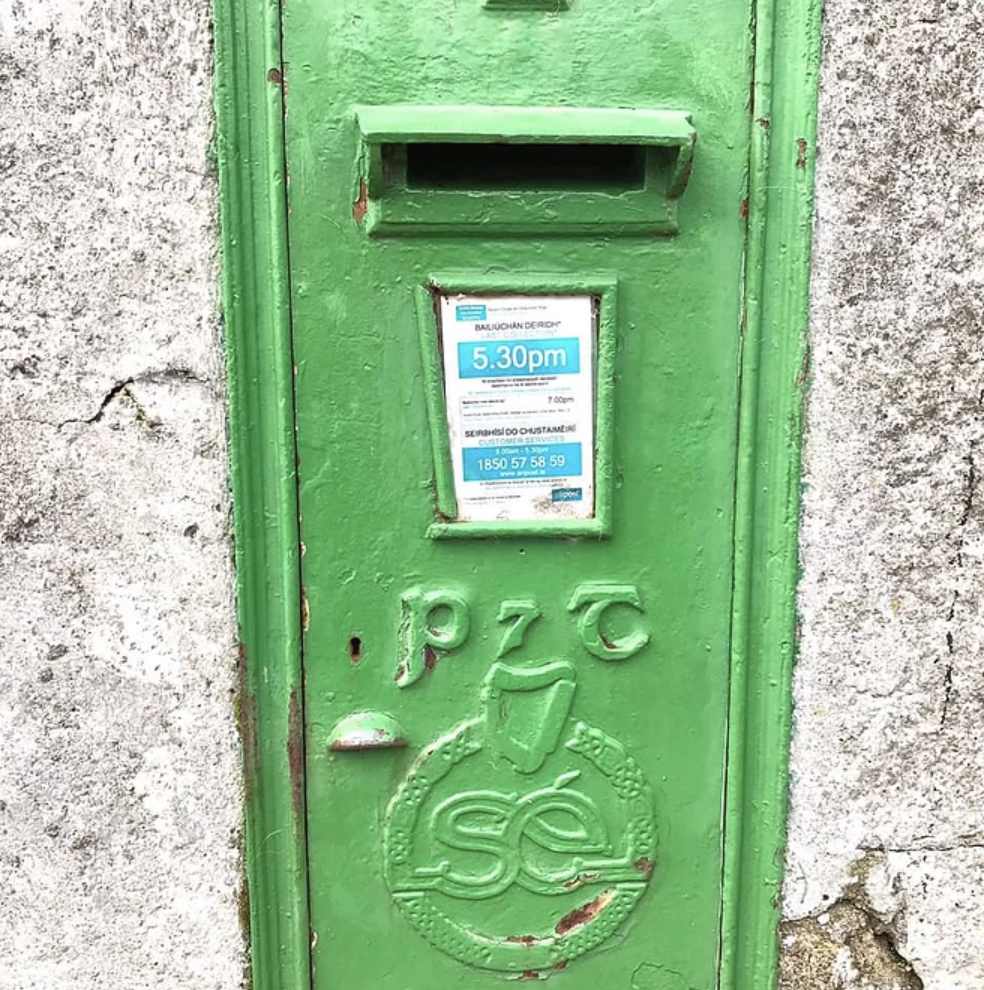Post boxes through the years – and postmen!

By Dairine Nuttall
In the past week I have passed a number of interesting old post boxes and took the opportunity to reflect on the importance of the postal service in times past -particularly in the rural areas.
Close to where I live is one of the earliest surviving hexagonal post boxes (also known as a Penfold), dating from the reign of Queen Victoria and made between 1866 and 1879. This beauty, which is listed for preservation, was moved from it’s original location. It was deemed to be too close to the road having received a knock from a truck, so moved around the corner to a safer location, is still in active service, and is a well loved feature in our locality.

Queen Victoria was succeeded by her son Edward who reigned from 1901 – 1910, and there are still a number of Edwardian boxes in Dublin city – most notably one across the street from Leinster House. This nice example was spotted in Sallynoggin in south Dublin. These boxes were originally red, but were painted green after the creation of the Free State, and at this stage their lovely detailing is slightly obscured by layers of paint over the years.

The next box I noticed is in a very obscure rural location – a gorgeous part of middle Wicklow, and built into a wall at the end of a steep road. This box, with GR on it is the last of the “royal” boxes as George V reigned from 1910 – 1936, but ceased to be King of Ireland in 1922.
Obscure its location may be in today’s terms, but in times past, this box represented one of the few lines of communication for people in this rural area – perhaps communicating with a child who had to emigrate…..

Following the creation of the Irish Free State, the Department of Posts and Telegraphs was set up in 1924, and assumed the functions that had been carried out by the Postmaster General of the United Kingdom. Like with any new country, it took time to change infrastructure, currency and so forth, so the existing post boxes were simply painted green, the colour of the Free State. However, some “Free State” or “Saor Stat Eireann” boxes were commissioned and I came across this lovely example in the rarified surroundings of Sandycove, Co Dublin. These are very rare and this is the first one I have seen, and dates from the 1920’s.

The role of the postman cannot be overstated in rural areas – particularly before An Post came up with the idea of the plastic boxes at the end of lanes. It was someone calling into the yard, or in most cases, the actual house, and usually someone who had a handle on all the news of the area, and who was the link between the town/sorting office and outlying rural areas.
We were particularly lucky with our postman, as he also worked for the local undertaker, so in those pre RIP.ie days, we had all the news, hot off the press! Our postman used to meet us at the end of the lane as we were meeting the school bus, and spared no detail of the latest death in the area. We then were able to regale the rest of the bus with this information on our way to school.
I have seen people without stamps wrap their post in newspapers and enclose the correct coinage for the stamps, and post that parcel in rural boxes – the postman who emptied it would be expected to buy and stamp the letters! Our postman would pick up outgoing letters and money from the dresser and do the same, and it was a system that seemed to work well.
Now the postal system is in a very different place. Letter writing is increasingly rare and most of what comes into the box tends to be business related. The postman does not tend to see the people whose post he delivers, and in many cases, people don’t even know the name of their postman.
So if you pass an old post box, reflect for a moment on what these once represented to people who lived in a time before phones or email. People for whom the sound of the postman could signal a communication from someone special, far away.
______
* This article was written by Dairine Nuttall, who along with being a director of WUC, is also an accomplished walking tour guide, writer and a great admirer of local history and folklore.
Republished by kind permission from www.irelandtourguide.ie/

